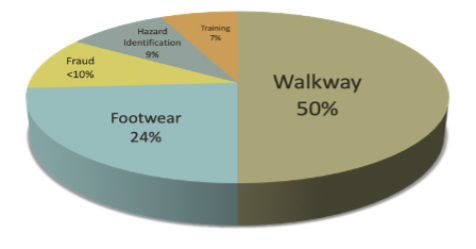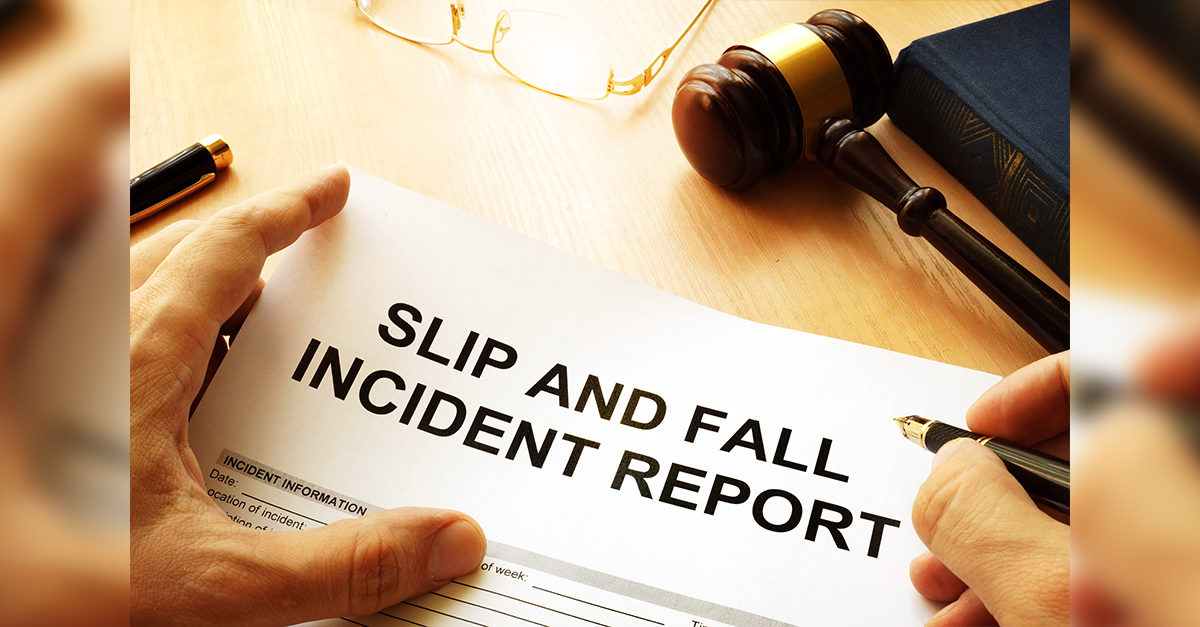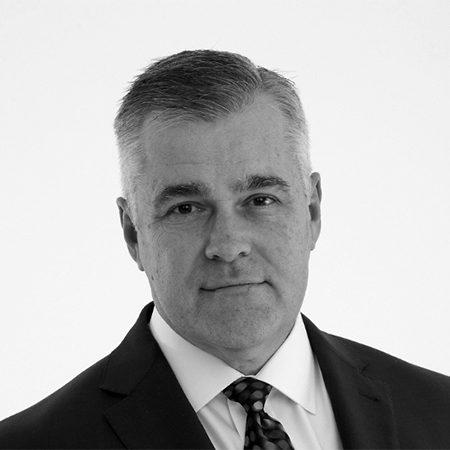Among the many hazards facility managers need to consider in keeping building residents and visitors safe, falls caused by slippery floors are at the top of the list.
The World Health Organization (WHO) reports that an estimated 684,000 people worldwide die from falling every year. Slips, trips, and falls (STFs) are the third leading cause of workplace injury in the United States, with an injury rate of 21.7 per 10,000 full-time workers according to 2020 statistics from the National Safety Council’s Injury Facts.
The National Floor Safety Institute (NFSI) offers information, training, and certifications to help facility managers reduce the risk of falling. Russ Kendzior, NFSI chairman and founder, recently answered questions about the NFSI and the role it plays in keeping walkways safe from STF incidents.
Q: How was the NFSI formed?
A: In 1997, I, along with nine other companies including the ISSA, founded the NFSI as a 501-c-3 non-profit foundation with a mission: “to aid in the prevention of slips, trips, and falls through education, research, and standards development.” The NFSI is a membership-based organization in which anyone can participate. It is governed by a 15-member board of directors, which includes a representative from the ISSA/IEHA.
Today, the NFSI is a global leader in STF prevention and an internationally recognized standards developing organization (SDO). It provides a range of services including independent product certification and STF prevention training. The NFSI has published standards on STF prevention since 2002 and was an accredited ANSI SDO from 2006 to 2018. NFSI standards are developed under the NFSI B101 consensus standards committee representing a wide range of stakeholders.
Q: How big is the STF problem?
A: Each year, 3 million people age 65 and older, are treated in U.S. emergency departments for fall injuries, according to the U.S. Centers for Disease Control and Prevention (CDC). Among all ages, falls top the list of the most preventable type of injury, according to 2020 statistics from the CDC that list a total of 20,902,133 nonfatal injuries from falls.
Based on 2014 published data from the U.S. Bureau of Labor Statistics, 261,930 private industry and state and local government workers missed one or more days of work due to injuries from falls on the same level or to lower levels, and 798 workers died from such falls.
The construction industry experienced the highest frequency of fall-related deaths, while the highest counts of nonfatal fall injuries continue to be associated with the health services and the wholesale and retail industries. Employees who are at highest risk of fall injuries are those working in:
- Health care support
- Building cleaning and maintenance
- Transportation and material moving
- Construction and extraction occupations.
Q: How does the NFSI help people?
A: The NFSI works in three areas: education, research, and standards development. Research has shown that most STFs are caused by an unsafe walkway (see graph below), so the NFSI concentrates its efforts on making walkways safer while developing educational programs and industry consensus standards that address all areas of fall causation.

You may be surprised to know that prior to the development of the NFSI’s B101 series of walkway safety standards, there were no STF prevention standards. Many flooring manufacturers have not adopted a formal slip resistance safety standard and do not test or label their products’ slip resistance.
The NFSI B101.5 standard offers flooring manufactures the opportunity to uniformly test and label their products’ slip resistance, allowing consumers to make a more informed decision when selecting floors.
Manufacturers of chemical floor cleaners and treatments can also test their products’ effect on slip resistance. The NFSI B101.2 “Test Method for Determining the Impact on Wet Coefficients of Friction of Various Chemical or Physical Walkway Surface Cleaners and Treatments on Common Hard-Surface Flooring Materials” outlines the test procedure for measuring the effects floor cleaners have on making floors slippery and ranks products as “traction enhancing,” “traction neutral,” or “traction reducing.”
Q: Are the NFSI B101 standards mandatory?
A: The NFSI B101 standards, like most voluntary consensus standards (ASTM, ANSI, etc.), are not mandatory like that of a law, but rather are adopted voluntarily. However, if a property owner is sued for an STF event, civil courts can and often rely upon NFSI standards in establishing the “standard of care.”
Q: How does the NFSI certify products?
A: The NFSI tests and certifies products as either “slip resistant” or “high traction.” Products rated as slip resistant are those intended to remain dry and must have an average static coefficient of friction (SCOF) or dynamic coefficient of friction (DCOF) value in the moderate traction range. High-traction products are those which are designed to work under solely dry or wet and dry conditions and must have an average wet SCOF or DCOF value in the high traction range. Products are tested to the B101.3, B101.1, or, in the case of floor mat backings, per the NFSI 101-C standard.
NFSI product certification involves two phases. Phase one is a laboratory test of the submitted product, and Phase two is a field or “real world” performance test. All testing is performed using an NFSI-approved tribometer, an instrument that measures sliding friction between two surfaces in contact. Products that rank as high traction in both phases of testing are certified as such. Products that rank as moderate traction are certified as slip resistant.
Q: What type of training and certifications does the NFSI provide?
A: The NFSI offers a wide range of educational programs, including classroom courses at a corporate training center in Hurst, Texas, or online training. The NFSI Walkway Auditor Certificate Holder (WACH) is a comprehensive three-day program that is offered both in-person and online. After completing the course, candidates must pass both a written and proficiency exam in which they demonstrate the ability to perform coefficient of friction (COF) testing using an NFSI-approved device.
Later this year, the NFSI will offer a series of one-hour modular training courses covering a wide-range of subjects such as: “Ten Easy Steps in Preventing Slips, Trips, and Falls,” “What Product Manufacturers and BSCs Need to Know About Floor Safety,” and “Are All Floor Cleaners the Same?”
Q: Slip and fall litigation is always a concern. What can facilities do to prevent being sued?
A: Facility managers need to first understand that most STF injuries are preventable and that most lawsuits either involve a wet floor slip hazard or a trip hazard like a curled, buckled, or raised floor mat. If you focus on prevention, you don’t need to worry about litigation. You won’t get sued for a slip and fall that didn’t happen. To prevent being a target of a lawsuit, you should:
- Routinely inspect floors for slip or trip hazards.
- Train workers in STF prevention.
- Test and document your walkways’ COF to identify slippery conditions.
- Use cleaning products and equipment that do not make your floors slippery.
- Once a hazard is identified, don’t leave it unattended. Call for assistance to remove the hazard and post warning signs as needed.
Q: How would an NFSI walkway safety program benefit health care and hospitality organizations?
A: STFs are a leading cause of employee, visitor, and patient injuries at health care facilities. These facilities have a disproportionately higher number of elderly and disabled guests/patients, who are at a higher risk of falls than the general public. Participation in the NFSI WACH program can help facility managers understand the unique issues at health care buildings and provide them with the knowledge and tools to better manage their STF risks.



